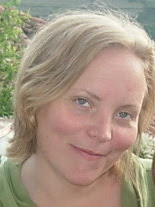Wednesday, October 15, 2008
Annotations & Thesis - HOW TO
Create an Annotation for your topics
The purpose of the annotation is to inform the reader of the relevance, accuracy, and quality of the sources cited.
1. Cite the book, article, web document using MLA STYLE.
2. SUMMARIZE the article you read on your topic (100-150 words)
3. ANALYZE and write a sentence or two on
a. how the article was helpful to your research,
b. whether it was a primary or secondary source, and how you know this
c. who was the intended audience, and
d. the background and authority of the author
See How to Create Annotations or Cornell Library's page or NHD's Official Guide for more information and help
Example Annotation (web)
Moyers, Bill. "Rachel Carlson."Bill Moyers Journal. September 21, 2007. PBS. 10/15/08.
http://www.pbs.org/moyers/journal/09212007/profile.html
This article gives a brief biography of Carlson's early life growing up in Pennsylvania, and how she became involved in studying and writing about wildlife and natural habitats. The article also discusses her controversial book, "Silent Spring", and how it prompted the Kennedy administration to investigate the impact of pesticide on the environment.
This article references several primary sources, including newspaper reviews and letters to the editor from 1962 when the book was published. it also provides links to several other sites about Carlson and her work for the environment, as well as the issues at stake. The author, Bill Moyers, is a journalist who has been reprting since the 1950s, and has worked for PBS and CBS. This article was helpful to my research because I found out how Carlson first got interested in the environment, and because it provides many useful links to additional research. I now have to follow up on how her book specifically affected policy and made changes, and I have to find out what is DDT and what is the debate.
WRITING Tricks Website A great list of Transition words, Adjectives, Synonyms, and other writing tips- check it out!
Try using the online thesis builder to help you write your thesis statement
http://www.ozline.com/electraguide/thesis.html
Example thesis statement and introduction:
Rachel Carlson was a visionary of environmental protection. She wrote many articles and books about how chemicals were poisoning the environment. Because of her research and writing, laws have been enacted and most of the pesticides whose use she criticized have been banned. Her message carried beyond the specific problem of pesticide use, and prompted the Federal Government to take action against water and air pollution as well as against the misuse of pesticides several years before it otherwise might have moved. Today, we still debate man's affect on the environment and global warming and despite the many beneficial changes to policy that sprang from her work, Americans now apply more than twice the amount of pesticides they did before Silent Spring was published, and totals also are increasing around the world.
The purpose of the annotation is to inform the reader of the relevance, accuracy, and quality of the sources cited.
1. Cite the book, article, web document using MLA STYLE.
2. SUMMARIZE the article you read on your topic (100-150 words)
3. ANALYZE and write a sentence or two on
a. how the article was helpful to your research,
b. whether it was a primary or secondary source, and how you know this
c. who was the intended audience, and
d. the background and authority of the author
See How to Create Annotations or Cornell Library's page or NHD's Official Guide for more information and help
Example Annotation (web)
Moyers, Bill. "Rachel Carlson."Bill Moyers Journal. September 21, 2007. PBS. 10/15/08.
http://www.pbs.org/moyers/journal/09212007/profile.html
This article gives a brief biography of Carlson's early life growing up in Pennsylvania, and how she became involved in studying and writing about wildlife and natural habitats. The article also discusses her controversial book, "Silent Spring", and how it prompted the Kennedy administration to investigate the impact of pesticide on the environment.
This article references several primary sources, including newspaper reviews and letters to the editor from 1962 when the book was published. it also provides links to several other sites about Carlson and her work for the environment, as well as the issues at stake. The author, Bill Moyers, is a journalist who has been reprting since the 1950s, and has worked for PBS and CBS. This article was helpful to my research because I found out how Carlson first got interested in the environment, and because it provides many useful links to additional research. I now have to follow up on how her book specifically affected policy and made changes, and I have to find out what is DDT and what is the debate.
WRITING Tricks Website A great list of Transition words, Adjectives, Synonyms, and other writing tips- check it out!
Try using the online thesis builder to help you write your thesis statement
http://www.ozline.com/electraguide/thesis.html
Example thesis statement and introduction:
Rachel Carlson was a visionary of environmental protection. She wrote many articles and books about how chemicals were poisoning the environment. Because of her research and writing, laws have been enacted and most of the pesticides whose use she criticized have been banned. Her message carried beyond the specific problem of pesticide use, and prompted the Federal Government to take action against water and air pollution as well as against the misuse of pesticides several years before it otherwise might have moved. Today, we still debate man's affect on the environment and global warming and despite the many beneficial changes to policy that sprang from her work, Americans now apply more than twice the amount of pesticides they did before Silent Spring was published, and totals also are increasing around the world.
Subscribe to:
Post Comments (Atom)

No comments:
Post a Comment